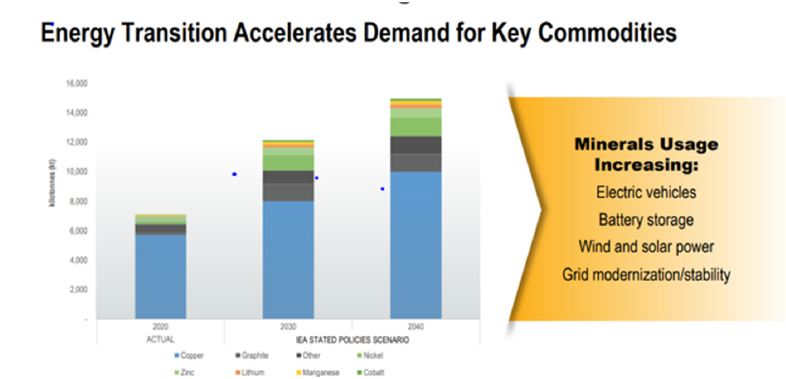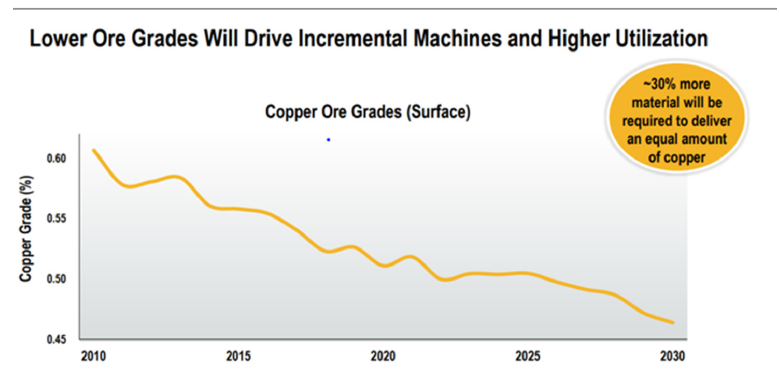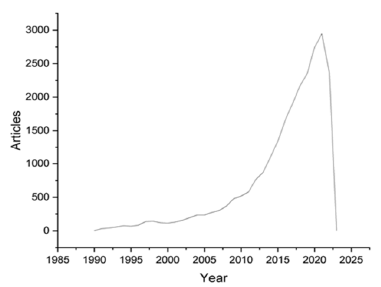- Submissions

Full Text
Aspects in Mining & Mineral Science
Assessment of Operating Protocols for Reducing Energy Consumption in Mining Dump Trucks
Carmen María Mateos Díaz*, Teresa Alonso Sánchez and Miguel Ángel Rey Ronco
University of Oviedo, Mieres Campus University of Oviedo, Spain
*Corresponding author:Carmen María Mateos Díaz, University of Oviedo, Mieres Campus University of Oviedo, Spain
Submission: December 12, 2023: Published: January 08, 2024

ISSN 2578-0255Volume12 Issue2
Abstract
The global energy crisis has caused a very considerable increase in gas and electricity prices since 2021. The unreliable supply of fossil fuels due to geopolitical instability caused by the war in Ukraine, combined with the aforementioned price increase, has led countries to change their energy policies. On the one hand, the transition to a larger proportion of energy supplied by renewable sources is being pursued, and on the other, there is higher consumption of particular fossil fuels to offset potential supply shortages. These two situations have led to increased mining activity, because certain minerals and metals are critical for the technologies used to produce renewable energies. Energy efficiency has become a critical factor in view of the upwards trend of energy costs and environmental policies. This paper provides an updated view of transport in mining and presents a literature review illustrating how different authors address the operating practices of dump trucks in mines specifically to minimize diesel consumption. It concludes with an example using benchmarking, one of the procedures mentioned in the literature.
Keywords:Esterification; Global energy; Caterpillar; Gradient; Petrochemical
Introduction
Energy consumption by industry in 2021 reached 170 EJ [1]. Industrial consumption represents one-third of total consumption and accounts for 9 Gt of CO2 emissions, 45% of end-use sector direct emissions. Mining accounts for 3.5% of global energy consumption. Mining is facing several challenges. One the one hand, facilitating decarbonization itself with critical metals (copper, nickel, lithium, etc.). used in renewables, batteries, etc., and on the other reducing its own environmental impact. In line with the Paris Agreement, mining needs to reduce its emissions by 58% compared with 2010. Reaching this target is difficult, given the increasing demand for minerals (Figure 1). The demand for mineral raw materials is expected to rise dramatically over the next 20 years, largely because of the energy transition [2]. In addition to the increasing demand for basic commodities, other factors suggest an increasing need for investment. For example, the grade of raw mineral material ores such as copper continues to drop worldwide. By 2030, the grade of copper ore will have dropped considerably, making it necessary to extract 30% more material to deliver an equal amount of copper from opencast mines (Figure 2). This will drive incremental machines and higher use of assets [2]. In opencast mines, most haulage systems use diesel trucks for moving both waste and mineral ore. Trucks account for 30%-50% of the mine’s energy consumption [3] and 60%-80% of emissions are attributed to the diesel engines used in these trucks [2]. Companies aware of energy savings and emissions requirements for 2050 must take into account that they need either to replace or upgrade this equipment. The solutions considered to date include switching from diesel, electrification, using other haulage methods or process optimization. For the most part, attempts are being made to reduce emissions using current technologies while awaiting the arrival of more advanced ones, which will require higher investment by companies.
Figure 1:Increasing demand for minerals. Source: Caterpillar.

Figure 2:Lower copper ore grade. Source: Caterpillar.

Biodiesel is being worked on as an alternative to conventional diesel. It is a renewable fuel that can be made from vegetable oils, animal fats and used cooking oils. Soybean, rapeseed and date palm oil are common sources of vegetable oils. Crude oils or animal fats undergo chemical processing (esterification) to form a fatty acid methyl ester. The esterified product is a biodiesel fuel that can be used in compression ignition engines. We shall not consider this area in this paper because it does not currently represent cost savings, only lower emissions. The use of natural gas is also a promising avenue and does offer cost savings, but although CO2 emissions are reduced, total emissions can still be a source of concern. Electrically-propelled vehicles are vehicles which use electricity as their primary source of energy rather than liquid or gas fuels, for example. To operate electrically-propelled vehicles, the infrastructure must be in place for either supplying energy directly or for recharging onboard batteries [4]. The batteries required for use in mine trucks are larger, need to supply a lot of power, and be able to withstand constant use and many more charging cycles than utility vehicles. Manufacturers of mine equipment (Volvo Trucks, Caterpillar, Komatsu, Liebherr, Hitachi Sandvik, etc.) are currently developing hybrid and electric battery trucks.
Caterpillar has focused on developing zero-emissions trucks. It has launched an accelerated development strategy very unlike the usual systems for new product launches. In late 2022, a prototype fully electric battery-operated dumper truck (model 793) was tested at Tucson Proving Ground. Caterpillar invited dozens of clients to its proving ground to see a demonstration of the electrical prototype performing over a 7-kilometre route. Fully loaded, the truck reached a maximum speed of 60km/h and covered one kilometer with a 10% uphill gradient at a steady 12km/h speed. The truck also travelled one kilometer with a 10% downhill gradient, used to recharge its batteries and recover the energy which would normally be lost as heat. Having completed the route, the truck still had sufficient battery power to perform several more full cycles, although Caterpillar has specified neither battery capacity nor how many working hours the truck can operate before recharge is required [5]. The company’s plan is, in 2024, to send “early learner” units to client mines where requirements will be refined, and product development and validation processes will be carried out. The pilot stage will begin in 2025 and production in 2027 [2]. All of this new technology is under development, and the analysis in this paper will focus on different studies to date which examine optimization of equipment working conditions, rather than the development of the equipment itself (Figure 3).
Figure 3:Electric dump truck development strategy. Source: Caterpillar.

Energy Optimisation
Energy optimisation stands out as a viable option for encouraging energy savings, reducing emissions and achieving sustainable development [6]. Hanafi et al. [7] performed a literature review of articles published on energy optimisation from 1990 to September 2022. The figure below shows distribution of articles by year. The first articles were published in the 1990s and their number has grown continuously since then. Recent years have seen greater attention being paid to this topic. The period can be divided into two stages, one incipient (1990-2014) and one abundant (2014-2022). In the first stage the number of publications per year was no more than 50 and annual growth was slow, but the second saw an uptick in the publication of energy optimisation articles with the number going from 1,100 articles in 2014 to 2,365 in 2022 [7]. Numerous studies on mining transport have been made, and we present some of them below (Figure 4).
Figure 4:Distribution of articles by year (Hanafi).

Fuel consumption has been researched using different tools. Using correlation and statistical studies, Soofastaei et al. [8] analysed variations in truck payload to illustrate the direct influence this has on fuel consumption. They obtained prediction models for specific working conditions, but these models were not able to be adjusted or accommodate new working conditions to estimate the stated variables. Using partial least squares and an autoregressive integrated moving average [8], Dindarloo et al. [9] analysed cyclical activities and their effects on fuel consumption using a neural network model, leaving out variables affecting consumption (gradient, rolling resistance, etc.) and focusing solely on operating activities, the aim being to minimise the time taken for these activities so as to minimise truck standby time, meaning that the engine is running for less time and less fuel is therefore consumed. This does not provide a view of fuel consumption behaviour and CO2 emissions resulting from operations [9]. Rodovalho et al. [10] used a statistical model to draw up an equation that enables fuel consumption to be inferred. This approach groups together several individual variables that affect fuel consumption, but which is entirely unable to manipulate them in such a way as to shed light on how each variable affects fuel consumption behaviour, since by using data and fitting them to specified behaviours, they can only be used for these behaviours and changes to any of them means that the same equation would not provide results for the behaviour required [10]. In addition, no consideration is given to truck bunching in operations and the outcome is taken as a whole, not as a result of operations.
Soofastaei et al. [8] used a discrete event simulation model to assess working situations and their effects on fuel consumption, the objective being to increase production and reduce fuel consumption but from the operating perspective of shovel and truck matching to increase production [8]. This approach focuses on shortening truck standby periods and therefore gives little insight as regards fuel consumption behaviour and its effects on the environment, i.e. it has no ability to handle variables such as production and fuel consumption as a set of variables that do not operate separately, but rather completely the opposite. Patterson et al. used a linear programming model to minimise fuel consumption in mining operations and found gaps in minimisation. They proposed a model that considers changes in operating conditions, such as for example changes to the transit route [11]. Daniel et al. studied fuel consumption using benchmarking in a mine located in India, minimising SFC [12]. Alamdari et al. [13] used machine learning techniques to predict haulage diesel consumption in opencast mines [13]. Bajani et al. used mixed integer linear programming (MILP) which optimises route selection and minimises fuel consumption by trucks and shovels alike in relation to production in a truckless mine. The advantage of the suggested MILP model is that equipment technical specifications are taken into account, permitting this model to be used in homogenous and heterogenous fleets [14]. Soofastaei et al. [15] identify the parameters with the greatest effect on rolling resistance and complete an investigation into the effect of these parameters on fuel consumption by haulage trucks [15]. Feng et al. [16] optimise various emerging solutions for a clean powertrain in a typical 240-tonne dump truck using an integrated control and design optimisation method and compare energy efficiency and carbon dioxide (CO2) emissions between a diesel engine dump truck and a diesel-electric propulsion truck [16].
Benchmarking
Benchmarking analyses and evaluates goods, services, processes and other areas through comparison with best practice in other companies, or even within the same company. Benchmarking objectives include identifying ways to improve operation, reduce costs, encourage innovation, define new growth strategies and prevent failures. Comparative evaluation of energy efficiency can be used as a tool for comparing the performance of one company with that of its competitors and estimate potential energy savings. Industrial energy efficiency is currently analysed mainly by applying energy indicators and energy benchmarking to calculate potential energy efficiency [17]. With regard to industries with intensive energy use, previous studies have proposed comparative evaluation systems for energy efficiency in the petrochemical and gas sectors, steel industry, cement industry and coal mining [17]. As stated above, Sahoo et al. used benchmarking for haulage in mines [18]. They specify a fuel parameter for minimisation (SFC) using a linear programming model. Benchmarking was performed with the data obtained from a limestone quarry in Rajasthan, India, owned by Shree Cements Ltd. The operation had an annual 11.4 million tonne output capacity and annual demand was 10.4 million tonnes. Operating time was 4,000 hours/year, from which an hourly demand of 2,600t/h can be deduced. The mine covers 7.5km2. Sixty-five tonne dump trucks were used. The main parameters used for the model were unloading speed, number of trucks and haulage distance. Loading and unloading times were assumed as constant, constant speed profiles were used and the effect of acceleration and deceleration was not taken into account. SFC was calculated for each route and, once optimum speed was found for trucks, this was applied to all routes. Each route had a specific length and truck payload which altered truck fuel consumption. Energy consumption was reduced by 17% [18].
Conclusion
The study analysed reveals high awareness of the issue, with a large number of published articles. Most of the solutions tend to use mathematical simulations which help determine optimum operation of the equipment concerned. Benchmarking is recognised as an effective analytical method and management tool which can improve energy efficiency. The article selected uses benchmarking on a single quarry and does not compare it with others in the sector. Its conclusions highlight the importance of transport costs in total quarry costs. Since dump trucks are used for haulage in most mines and currently most of these trucks run on diesel, reducing fuel consumption is a priority for achieving energy savings and lower emissions in mines.
Acknowledgement
The author wishes to thank Teresa Alonso Sanchez and Miguel Ángel Rey Ronco for their work, dedication and interest.
References
- Birol DF (2022) World Energy Outlook.
- Caterpillar-2022-Investor-Day-Presentation (1).pdf.
- Muralidharan R, Kirk T, Blank TK. Exploring pathways to decarbonize bulk material hauling in mining.
- pdf.
- https://www.caterpillar.com/en.html.
- Cai W, Wang L, Li L, Xie J, Jia S, et al. (2022) A review on methods of energy performance improvement towards sustainable manufacturing from perspectives of energy monitoring, evaluation, optimization and benchmarking. Renew Sustain Energy Rev 159: 112227.
- Hanafi I, Samoudi B, Halima A, Canale L (2023) Hotspots and tendencies of energy optimization based on bibliometric review. Energies 16(1): 158.
- Soofastaei A, Aminossadati SM, Kizil MS, Knights P (2016) A discrete-event model to simulate the effect of truck bunching due to payload variance on cycle time, hauled mine materials and fuel consumption. International Journal of Mining Science and Technology 26(5): 745-752.
- Siami-Irdemoosa E, Dindarloo SR (2015) Prediction of fuel consumption of mining dump trucks: A neural networks approach. Appl Energy 151: 77-84.
- Rodovalho EDC, Lima HM, De Tomi G (2016) New approach for reduction of diesel consumption by comparing different mining haulage configurations. J Environ Manage 172: 177-185.
- Patterson SR, Kozan E, Hyland P (2017) Energy efficient scheduling of open-pit coal mine trucks. Eur J Oper Res 262(2): 759-70.
- Bórquez Dönicke D, Ramis Lanyon F (2017) Calculation of fuel consumption and CO2 emissions of mining trucks, using Discrete simulation. Rev Ingeneria Ind 16(2): 151-168.
- Alamdari S, Basiri MH, Mousavi A, Soofastaei A (2022) Application of machine learning techniques to predict haul truck fuel consumption in open-pit mines. J Min Environ 13(1): 69-85.
- Bajany DM, Xia X, Zhang L (2017) A MILP Model for truck-shovel scheduling to minimize fuel consumption. Energy Procedia 105: 2739-2745.
- Soofastaei A, Fouladgar M (2022) Advanced analytics for haul trucks energy-efficiency improvement in surface mines. In: Soofastaei A (Ed), Advanced analytics in mining engineering: Leverage advanced analytics in mining industry to make better business decisions. Springer International Publishing pp: 539-556.
- Wei ling X, Wang Qiang G, Feng li S (2008) Aerodynamic characteristics about mining dump truck and the improvement of head shape. J Hydrodyn 20(6): 713-718.
- Wang N, Wen Z, Liu M, Guo J (2016) Constructing an energy efficiency benchmarking system for coal production. Appl Energy 169: 301-308.
- Sahoo LK, Bandyopadhyay S, Banerjee R (2014) Benchmarking energy consumption for dump trucks in mines. Appl Energy 113: 1382-1396.
© 2024 Carmen María Mateos Díaz. This is an open access article distributed under the terms of the Creative Commons Attribution License , which permits unrestricted use, distribution, and build upon your work non-commercially.
 a Creative Commons Attribution 4.0 International License. Based on a work at www.crimsonpublishers.com.
Best viewed in
a Creative Commons Attribution 4.0 International License. Based on a work at www.crimsonpublishers.com.
Best viewed in 







.jpg)






























 Editorial Board Registrations
Editorial Board Registrations Submit your Article
Submit your Article Refer a Friend
Refer a Friend Advertise With Us
Advertise With Us
.jpg)






.jpg)














.bmp)
.jpg)
.png)
.jpg)










.jpg)






.png)

.png)



.png)






